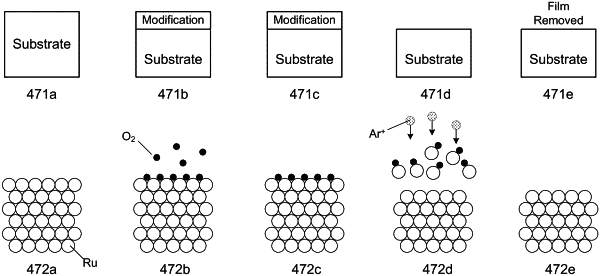| CPC H01L 21/32139 (2013.01) [H01L 21/32136 (2013.01)] | 9 Claims |

|
1. A method for atomic layer etching a metal containing layer where the metal containing layer comprises at least one of ruthenium and molybdenum, comprising:
a) forming a patterned mask over the metal containing layer, wherein part of the metal containing layer is exposed by the patterned mask wherein part of the metal containing layer is covered by the patterned mask and is unexposed by the patterned mask;
b) modifying at least a region of a surface of the metal containing layer exposed by the patterned mask to form a modified metal containing region comprising at least one of ruthenium oxide and molybdenum oxide by exposing a surface of the metal containing layer to an oxygen containing modification gas, wherein part of the metal containing layer that is unexposed by the patterned mask remains an unmodified metal containing region; and
c) selectively removing the modified metal containing region with respect to the unmodified metal containing region by exposing the surface of the metal containing layer to an inert bombardment plasma generated from an inert gas to remove the at least one of ruthenium oxide and molybdenum oxide.
|